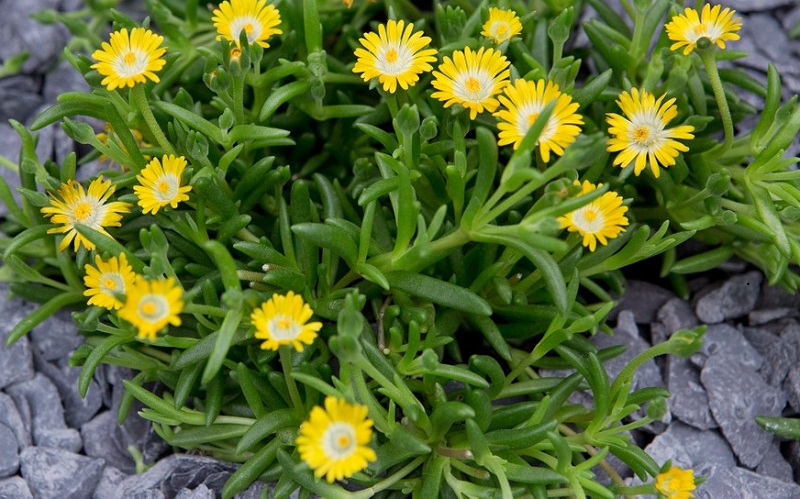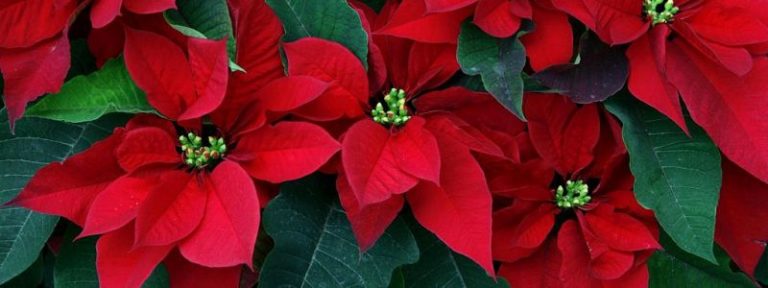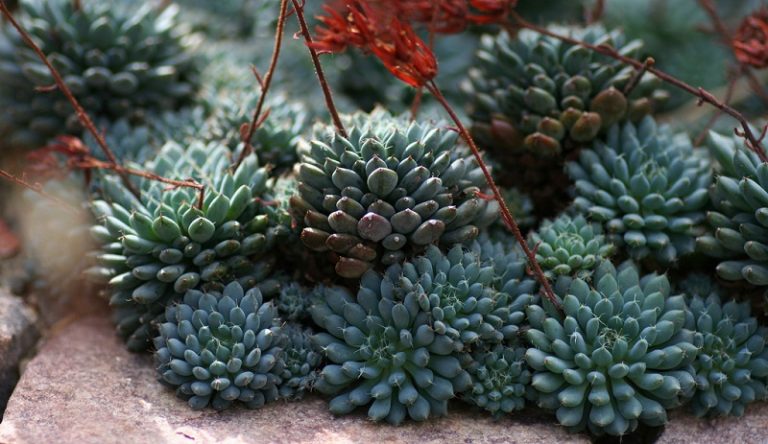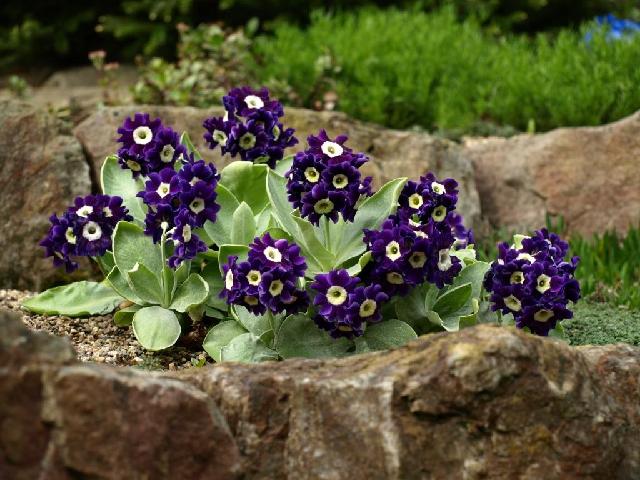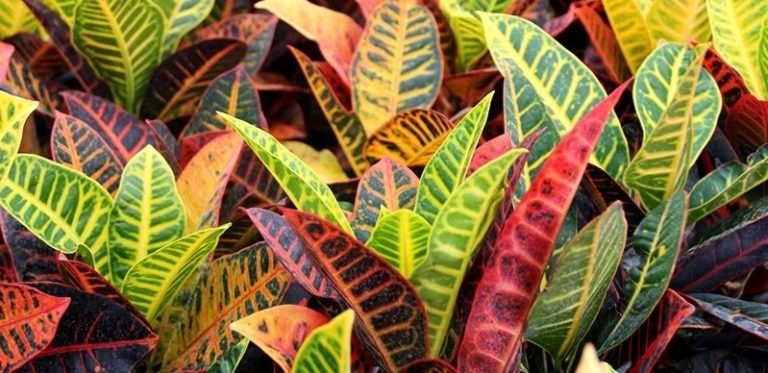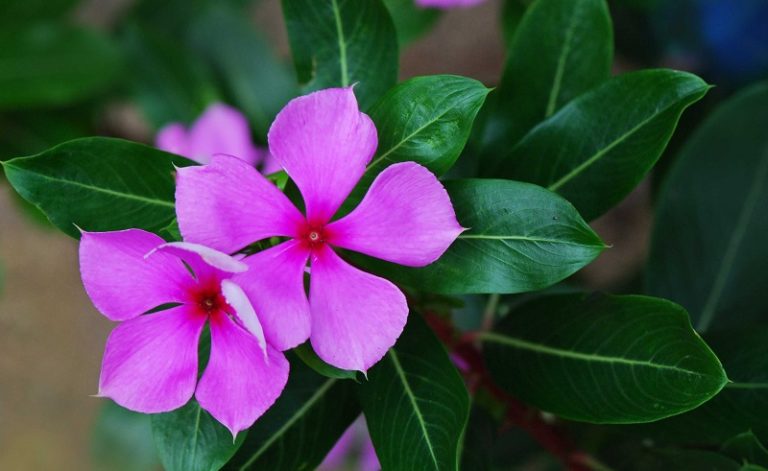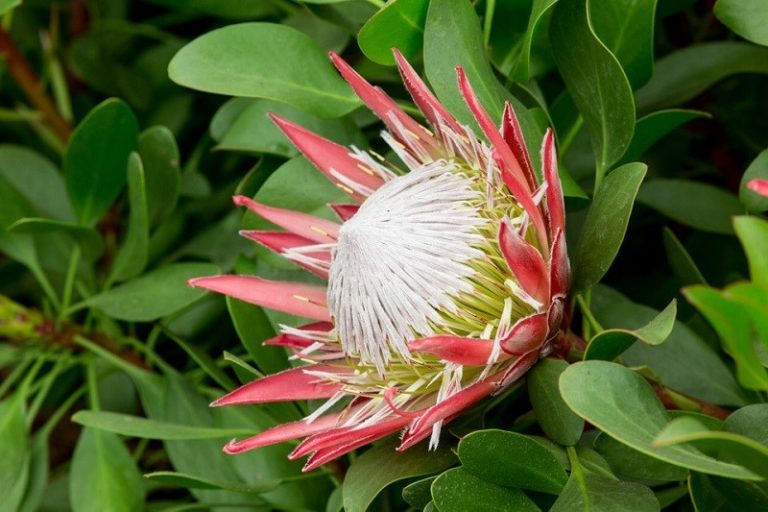Delosperma – care
Due to the bright flowering of delosperma and the variety of flower colors, this plant is often used in the design of the front edge of flower beds.
Flower growers often plant this plant on alpine slides – their compact size allows them to fit into various compositions. Due to its small size, this plant is also well suited for home or container cultivation.
Delosperma (Delosperma) is a succulent plant from the Aizov family. In its natural environment, this flower can be found in southern and eastern African countries, grows as a ground cover plant.
Such an interesting name for the flower comes from the words “obvious, noticeable” and “family”. Delosparma grows rapidly and widely. The leaves of the plant have an interesting feature: crystals of mineral salts can appear on its surface, which is why it is also called “ice”. Delosperma flowers are shaped like multi-colored daisies, have many narrow petals and are represented by a wide range of different colors. The flowering period of many species is quite long and lasts from the last days of May to autumn frosts. It does not hibernate in the open field.
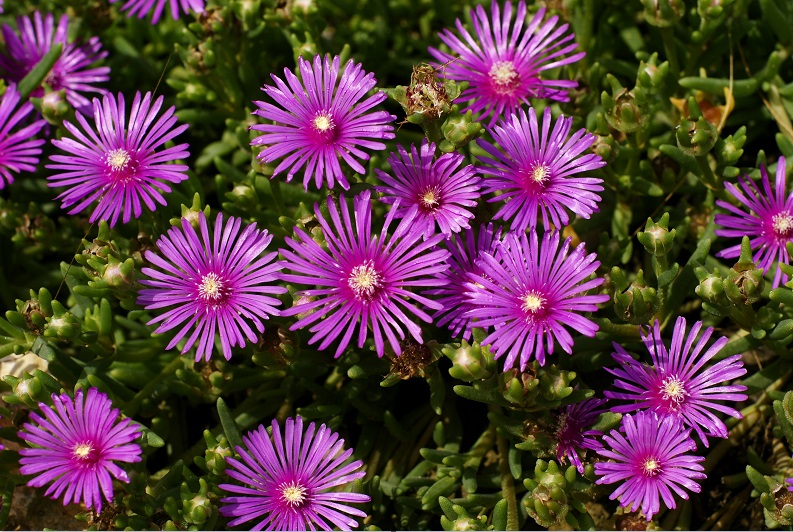
Lighting or place to grow delosperma
Much of the moisture is retained in the leaves of delosperma, so it tolerates both heat and drought well. Therefore, it can be grown in the south. Windows from autumn to summer, but in hot summers it is worth shading from the midday sun.
Watering and humidity for delosperma
You need to water the delosperma in the morning. This is done after the upper part of the soil has begun to dry out. To prevent water from accumulating in the roots, the earth should be moistened only if necessary, and not according to the schedule. In cold weather, it is necessary to wait for almost complete drying of the soil. During watering, you should try to prevent moisture from accumulating in the leaf axils, excess water must be drained. Stagnant moisture, along with coolness, can destroy the flower.
If delosperma is taken out in the garden for the summer, it must be hidden from heavy rainfall: even the presence of drainage holes does not guarantee protection against overflow.
Delosperma is not sensitive to changes in humidity, but during periods of heat and drought, the area near the bush can be occasionally sprayed.
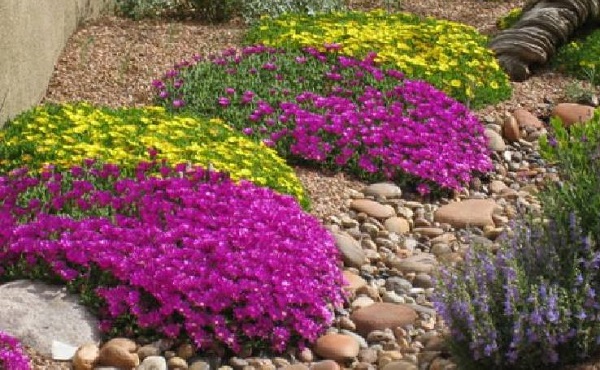
Temperature for delosperma
In summer, delosperma is able to endure short periods of heat up to +40 degrees, but temperatures just above +25 degrees are considered the most comfortable for her. In winter, during the dormant period, it is recommended to keep this plant in a cool room (about +8 degrees). Short, but not too frequent temperature fluctuations are acceptable.
Feeding delosperma
Usually, home delosperma is almost not fed. This should be done only with adult plants that have not changed the soil for more than 2 years. Top dressing is carried out no more than once every 3 weeks from mid-spring to mid-summer. To do this, you can use soluble fertilizers in half the dosage indicated. This feature of caring for delosperma is due to the fact that from an excess of nutrients it begins to develop worse, bloom less and stretch.
Soil and transplantation of delosperma
The soil for delosperma should be light and breathable. In such soil, the roots will be able to develop better. Water in the soil should not be retained – this can lead to the development of putrefactive processes. You should not choose excessively fertile soils, only slightly nutritious ones will be enough. Suitable soil for cacti.
Only too large or diseased specimens should be transplanted. The ideal time for this is the end of the dormant period, before the start of the growing season – in the spring.
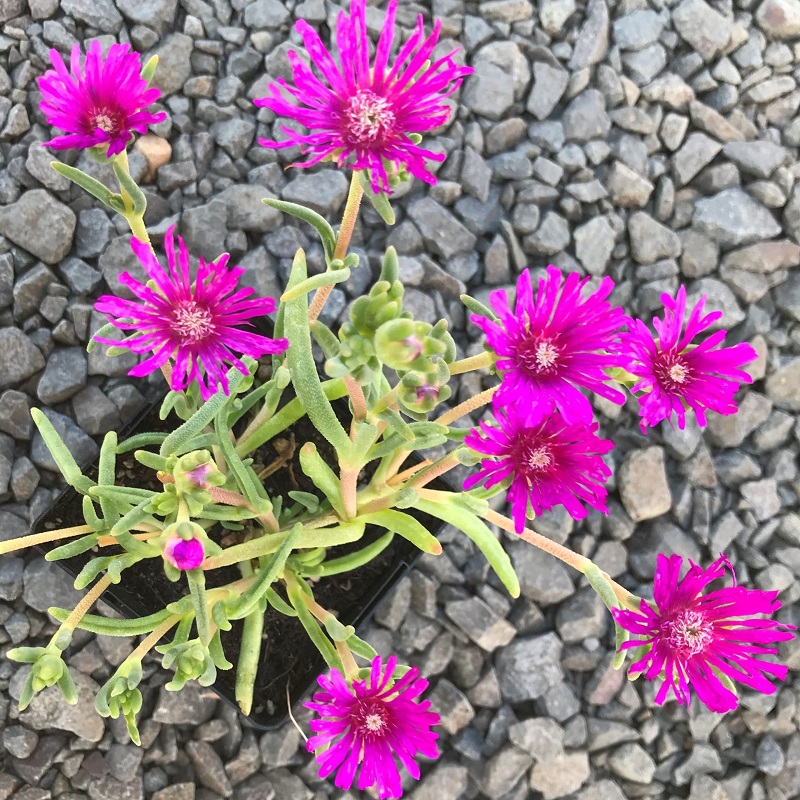
Pruning delosperma
Pinching and pruning of shoots is carried out only when necessary. The cause of pruning may be slow growth or the presence of a large number of dry stems. They are also pruned for better survival of transplanted plants or cuttings. All the lower leaves are removed from them. To stimulate growth, you can cut off the tops of the longest stems. This will allow lateral shoots to develop. Cut parts of the plant take root easily.
You also need to prune faded flowers to prolong flowering.
Delosperma bloom
Bright multi-colored flowers of delosperma open only in the sun, on rainy and cloudy days they are closed. But you can enjoy their appearance for a very long time – flowering lasts from late spring to late autumn. On one stem, many single basket flowers from 2 to 7 cm in diameter are formed. Due to their number and large enough size for a small bush, the plant forms real flower mats. Their color includes the whole range of tones of purple, red, yellow and white, there are also two-tone specimens. The shape of the flowers can be either simple or semi-double
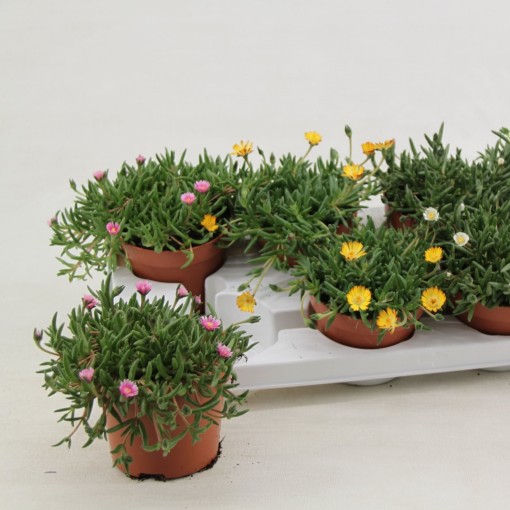
Delosperma seeds
The seed box of plants is quite large and contains many small seeds. Having time, from moisture ingress, it opens, scattering seeds widely. After harvesting, the pods are dried, and after harvesting the seeds, they are stored in paper bags
.
Methods of propagation of delosperma
Seeds, cuttings, dividing the bush
Diseases and pests of delosperma
Delosperma is very resistant to pests and major flower diseases. All problems with its cultivation, as a rule, are associated with mistakes in choosing a place or caring for a flower. Excessively cool and rainy weather can also be the culprit of decay.

